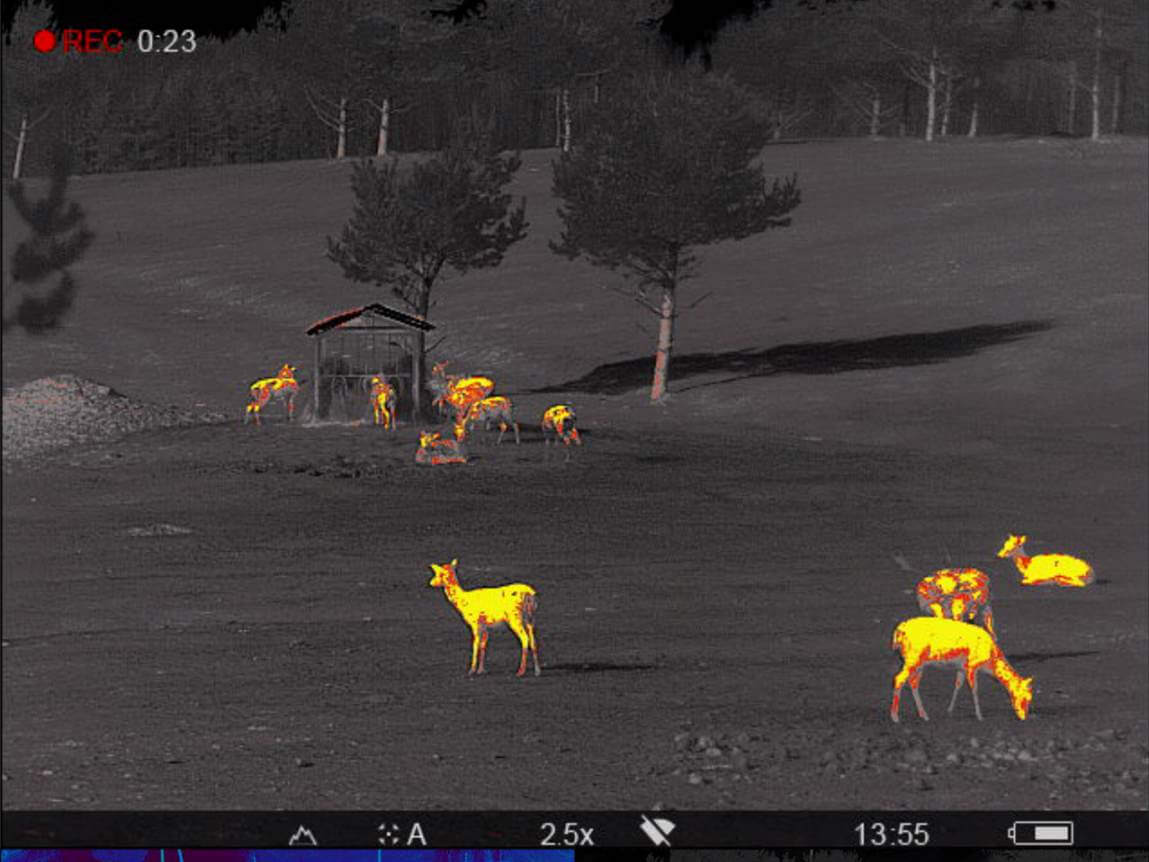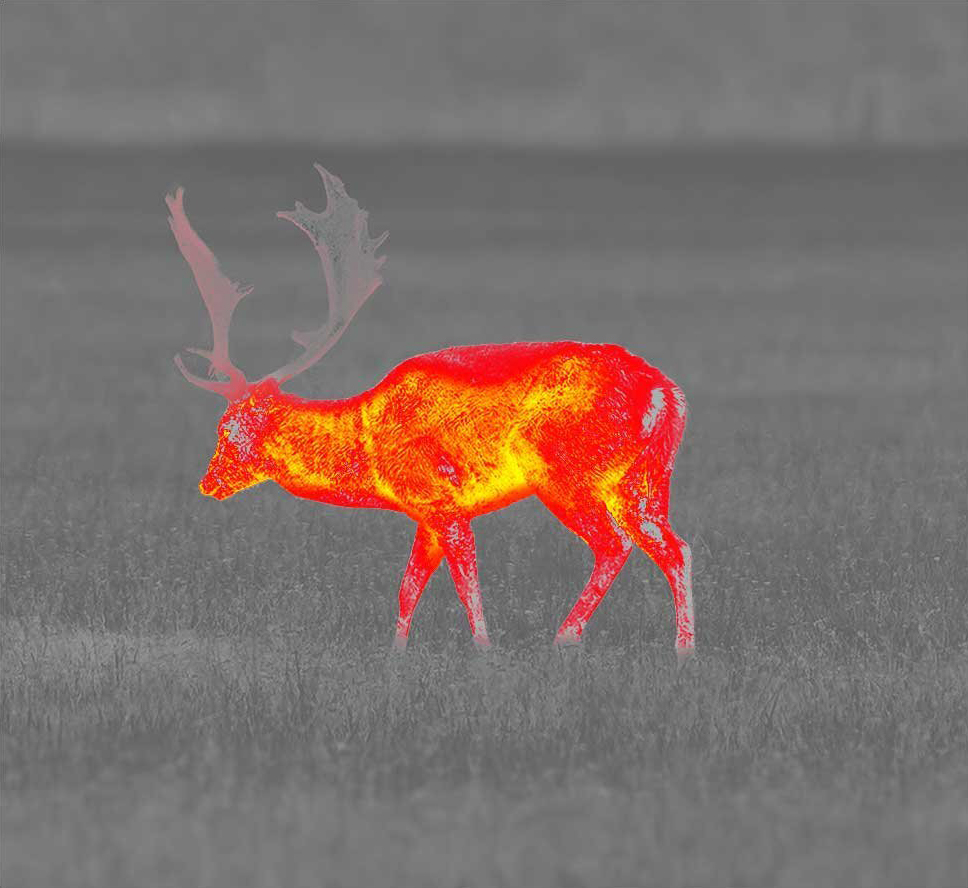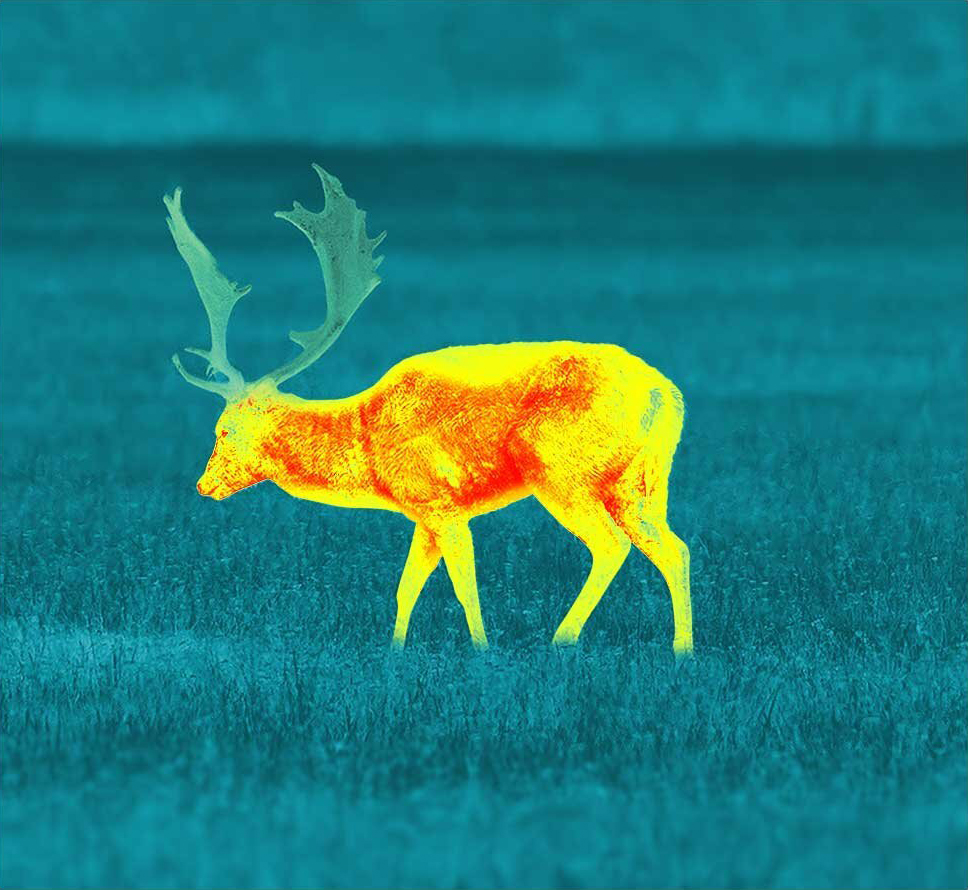Your cart is currently empty!

How does Night Vision work?
Introduction
By the end of this article you will understand two things:
- The basics of night vision; the differences between, and the pros and cons of, the two main varieties: thermal and digital.
- But more importantly: you will gain an appreciation of the fact that everyone looking into adding night vision to their capabilities is best served seeking the advice of professionals who can advise on the best solutions for their particular needs.
The basics
To the layman it may appear that thermal and digital night vision devices are the same. Indeed, they both have many of the same components; digital display, eye piece, buttons and battery. The main difference in components however is that digital night vision devices employ an infrared illuminator. Essentially digital night vision illuminates darkness with infra-red light. Thermal devices don’t have an Infra-red illuminator because, to put it simply, they do not see light – they see heat. Thermal night vision works by showing you sources of heat – anywhere.
Image 1

Thermal Night Vision

Digital Night Vision
For many reasons, some of which we will go into, thermal night vision devices are usually two, three, or even four times more expensive than their digital counterparts.
These devices, in very basic terms, do the same thing: they let you see in the dark (see image 1). But they achieve this by employing entirely different science, and, therefore, their internal sensors operate on an entirely different principle. The sensors involved in seeing thermal radiation at this point are just more expensive to manufacture.
How does this manifest in how they actually function? The range of detection for a digital device maxes out at around 400-500 meters. This is simply because the infrared illuminators aren’t capable of illuminating objects, without extensions, farther away than this.
This is the first major discernible difference between the two main types of night vision devices. Even basic thermal devices offer a range of about a kilometer. More than doubling the detection range straight off the bat. For high quality examples of thermal devices this detection range can be extended even twice that again.
Thermal devices do have a comparatively low-resolution front sensor, and in this respect digital devices offer an advantage, in terms of the basic resolution of the image. This is why determination of finer detail, such as sex of an animal, is easier on digital devices (but at much lower distances). It should also be remembered that these devices are cheaper.
For range and versatility thermal is superior
Thermal night vision is superior in bad weather because it can penetrate through rain, fog and snow easier than digital. Of course, however, both systems are affected to some extent by bad weather; these are not x-ray machines you are lugging around. Thermal can’t literally see through obstacles, but thermal does not rely on light in any way and therefore is not hampered by stray reflections of rain or snow the way digital is.
These stray reflections will distort a digital night vision image, not unlike the full beam of car headlights being reflected back off of falling snow. As in this circumstance, more light can actually make it more difficult to see.
Recently some of Pulsars thermal products have received a firmware update , allowing for clearer recognition in areas of low temperature differences (i.e. in bad weather, see image 2 below).
Image 2

What you are paying for with thermal:
- Much superior detection range (1300m -2300m)
- The inability for the animal to hide, heat will be detected
- Thermal is more effective in daytime than digital – it does not register light at all
- If anything, living or not, emits heat, it will be seen, whereas digital relies on movement or eye shine (reflection of the infra-red beam)
Users employing thermal devices can spot animals much faster.
What the image is translated from in thermal devices is the subtle differences in heat signatures. Thermal cameras can detect heat differentials as minuscule as 0.01°C. These differences (the heat source vs. the background scene) can be displayed in up to 8 different colour palettes: white hot; black hot; red hot; red monochrome; rainbow; violet; sepia and ultramarine (see examples below). This is totally dependent on personal preference and very easy to change.

White Hot

Black Hot

Red Hot

Rainbow

Ultramarine
Different objects and materials radiate and absorb heat, or thermal energy, faster or slower than others. A particular area is not one uniform temperature but a mosaic of temperatures; it’s this difference that allows you to see anything at all with these displays. These clever devices translate these differences into a single image, albeit a moving one, we can readily interpret visually.
In an ideal world, the best of all options could be combining digital and thermal night vision, ensuring that in all situations, and in all scenarios, all your bases are covered. If, however, this is not an option or only one device is necessary, the basics outlined should give potential new nocturnal observers a better idea of what might suit their own specific needs.
The key takeaway:
You really need a good reason not to see things with thermal night vision. Digital is good – don’t misunderstand – and a lot less expensive but it relies on movement or eye shine as there is no colour contrast in the image. Because of this: thermal night vision is equally effective in day and night.
Conclusion:
These are just the basics, and this can be an extremely complex and technical area, a subworld in a world of scopes, spotters, and other visual accessories, that can already feel dauntingly complex. This is why the best option of all is to contact us directly to discuss your specific needs and the uses toward which you intend to put these devices.
In this area perhaps more than most, everyone is unique, and whether you are a bird watcher, star gazer or pest-control professional, or are seeking to employ these devices in the same location, or perhaps in many different kinds of locations, in many different potential kinds of conditions – the best option is to discuss the choices and options available to you with open minded experts who are genuinely enthusiastic to offer tailored solutions to your particular needs.
Don’t hesitate to get in touch
Nature in Focus is here for you. Whatever your specialised needs or requirements, in the areas of Pulsar Thermal or Pulsar Night Vision, Nature in Focus has the expertise and the enthusiasm to tailor a solution specifically to your needs.
No concern is too small to communicate to our experienced team, and no question is too off-the-wall for us to answer straightforwardly. We only want to help you attain your objective of acquiring the night vision equipment tailored specifically to your individual needs.
